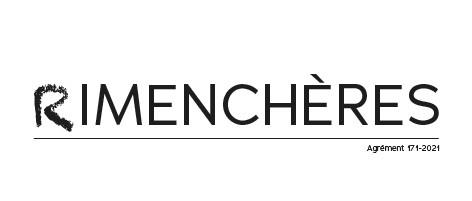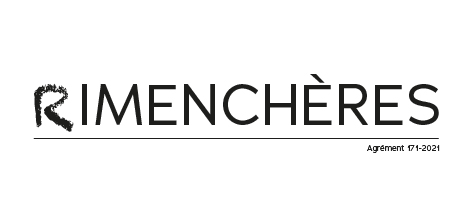Lot n° 47
Estimation :
30000 - 50000
EUR
Result with fees
Result
: 41 600EUR
Rare Coran aux écritures juxtaposées
Turkoman Empire, probably Aq-qoyunlu, second half of the 15th century; Binding : Iran, Safavid art, 16th century
Arabic manuscript on cream paper, 418 ff, 3 ff. blank. Qur'anic text of 10 lines per page inscribed in elegant naskhi, in brown ink, vocalization in red, bordered by two others inscribed, in medium thuluth in gold highlighted in black. Vocalization in black. The end of the verses indicated by gold rosettes punctuated with red and blue. The interlinear lines in gold highlighted with black. Marginal medallions on all double-pages, in the form of flamed discs or almond-shaped medallions, with cobalt blue background decorated with delicate garlands, punctuated with small red flowers.
The titles of the suras are written in thuluth (except for the titles of the suras Ya-Sin (36) and Nûh (71), which are written in muhaqqaq), on a background of swirling scrolls of palmettes, gold and black, in cartouches illuminated with the same decoration as the marginal medallions. Divisions and subdivisions of the Juz', and Persian marginal comments: instructions for recitation, in a large red thuluth. The five and ten verses in a smaller thuluth, inscribed in red. Persian marginal comments in brown ink, later. Double frontispiece, inscribed in naskhi, finely illuminated with gilt scrolls on a cobalt blue and black background. Three lines in superb broad gold thuluth indicate the end of the Qur'anic text, faithfully and without any modification of the sacred text. Magical inscriptions for the protection of the manuscript: "Yâ Kabîkadj yâ qatmîr Yâ qusûr". This magic formula evokes the "Kabîkaj", a plant used to protect the manuscripts from the damages caused by the insects. The word "Qatmîr", refers to the dog of the seven sleepers of "Ahl al Kahf". The binding is made of stamped and gilded leather, decorated with arabesques and foliage, and with a calligraphic border with the verse of light (35). Inside binding boards decorated with mandorla pendants, and spandrels in colored paper cut out.
Condition: Several titles of suras retouched, several repairs, traces of wetness, text of frontispiece including titles restored or retouched, margins reduced to match size of binding, wear.
23.5 x 17 cm; Text area: 16.5 x 10.5 cm
The use of different calligraphic styles in the same text is called juxtaposition. This practice, used as early as the 12th century, became more popular in the 14th and 15th centuries, especially in Central Asia. This Qur'an is a very fine example of this practice. The scribe, by alternating three styles of writing, the thuluth in two proportions or the naskhi; and by the variations of colors, between the brown ink and the gold highlighted with black, manages to offer to his work elegance and perfect balance. Our Qur'an is part of a very rare group of manuscripts, often attributed, with questions, to Shiraz, Tabriz, Herat or further west to Iraq. This is due not only to the absence of colophons, but also to the singularity of their decorations and calligraphy. The recent discovery of a few manuscripts with their colophons has allowed for a better identification of this group. Our Qur'an has been able to preserve the few lines preceding the colophon, as well as the original illumination of its frontispiece. This has allowed us to make a comparison with a number of located and dated manuscripts, also calligraphed in juxtaposition, presenting several common characteristics, some of them almost identical:
- Two Juz' of a Qur'an dedicated to Ya'qub Beg (r. 1478-90), Aq-qoyunlu, signed Zayn al-'Abidin al-Katib, dated 888H./1483, presented at Sotheby's, Arts of the Islamic World, London, 23 October 2019, lot 121 and 10 June 2020, lot 20 ;
- Folios (1v - 2r and 274v - 275r) of a 30 Juz' Qur'an made for the ruler Aq-qoyunlu Ya'qub Beg in 1483, preserved in the Chester Beatty Library in Dublin (in. CBL Ms. 1501-2), published in: Martin Lings, Splendours of Qur'an Calligraphy & Illumination, Thesaurus Islamicus Foundation 2005, cat. 56 and 57, p. 65 ;
- Aqqoyunlu Qur'an Juz' dated 1497-98, shown at Christie's, Art of the Islamic and Indian Worlds, London, 1 April 2021, lot 12;
- A Qur'an differing only in the muhaqqaq lines in place of the broad thuluth, and in slightly larger size, with identical illuminations, without the original frontispiece (replaced by an earlier one), and without the colophon, attributed to Shiraz, second half of the 15th century, shown at Christie's, Art of the Islamic and Indian Worlds, London, April 8, 2008, lot 119 ;
- Fragment of a Qur'an, calligraphy attributed to Yaqut al-Must'asimi, held in the Nasser D. Khalili Collection (Acc. QUR302), published in David James, The Master Scribes. Qurans of the 10th to 14th centuries AD, The Nour Foundation, 1992, cat. 14, p. 70.
- A Quran similar to ours, described as Timuri
My orders
Sale information
Sales conditions
Return to catalogue


